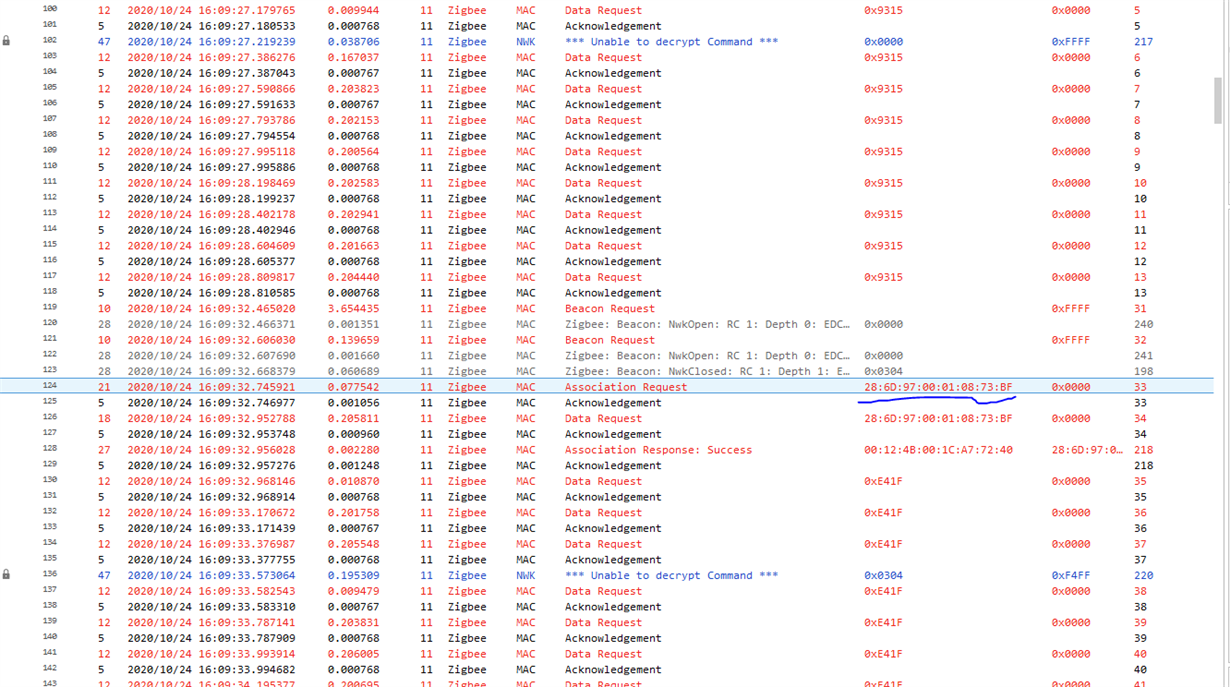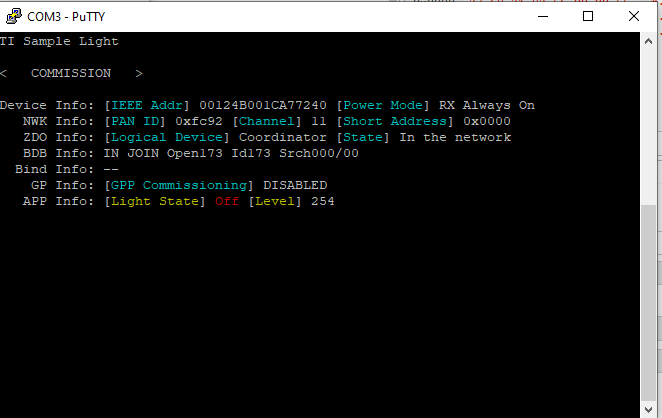Other Parts Discussed in Thread: SIMPLELINK-CC13X2-26X2-SDK, CC2652R
Tool/software: Code Composer Studio
Hi,
Trying to get into the basics of Zigbee interoperbility and what it takes to get a proof of concept going where we can add third party sensors to the launchpad code example for light.
We are following the labs and setting up network in general works well with using serial port.
What we want to do now is to use the zigbee light example running coordinator on cc2652, control it via serial port, and then connect a Samsung smartthings button.
How can this be done in the easiest possible way? Our udnerstanding is that in the field you will typically scan a device QR code or similar and then get the 16 byte installation code.
I have the installation code for the third party device, but it does not seem like the Ti examples are made for adding third party devices, but maybe it is possible anyway?
Appreciate all help. And if this is obvious or information can be found another place, please let me know.
Thank you!
-Fred




